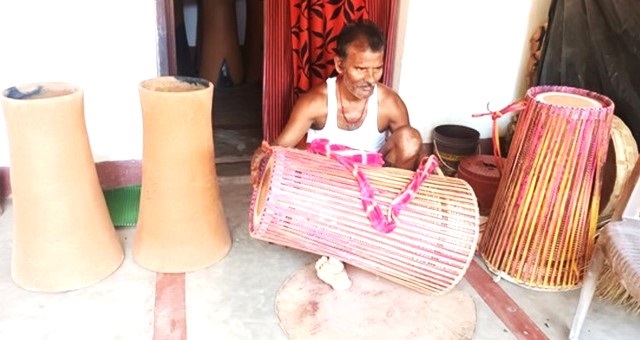

Jharkhand's traditional musical instrument 'Mandar' (Photo: IANS)
Ranchi, Dec 17 (IANS) Jharkhand's centuries-old traditional musical instrument, Mandar, is on the verge of receiving a Geographical Indication (GI) tag, with the final hearing scheduled for December 20 before the Registrar of Geographical Indications, Government of India.
Mandar holds a special place in Jharkhand's cultural heritage, serving as the primary instrument played during festivals, crop celebrations, religious rituals, and cultural events. It is deeply integrated into the lives of both tribal and non-tribal communities, having been used for centuries in various dance and song performances.
Securing the GI tag will not only provide formal recognition but also present Mandar as a unique cultural and intellectual property of India on the global stage.
Currently, Jharkhand has only one GI tag, awarded in 2021 to Sohrai paintings from Hazaribagh district.
The claim for the GI tag was filed in 2023 on behalf of Mandar by the Mandar Producer Company of Jarjatta village, located in the Raidih block of Gumla district. This initiative was spearheaded by the then Deputy Commissioner of Gumla, Sushant Gaurav, and is now being closely monitored by the current Deputy Commissioner, Karna Satyarthi.
Sources indicate that Jharkhand's claim has so far met most of the required parameters during previous hearings.
Nandlal Nayak, a renowned folk artist from Jharkhand highlighted the uniqueness of Mandar, stating that no similar replica has been found in any other region or country. Jarjatta village, known for its expertise in crafting Mandar, has been associated with its production since ancient times. Today, the fourth generation of 22 families in the village continues this traditional craft.
The Mandar is a percussion instrument characterised by its distinctive cylindrical shape made from red clay, which slightly bulges in the middle. The structure is hollow, with its openings covered by leather on both sides. The right opening is smaller, while the left is larger. The leather coverings are secured using braided cords.
A special coating, known as Kiran, is applied to the smaller opening, giving Mandar its resonant and unique sound. When played, the musician often moves rhythmically, carrying the instrument using a rope slung over the shoulder.
If granted the GI tag, Mandar will not only bolster Jharkhand's cultural identity but also create opportunities for its preservation and global promotion.